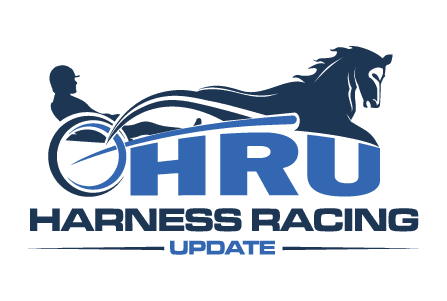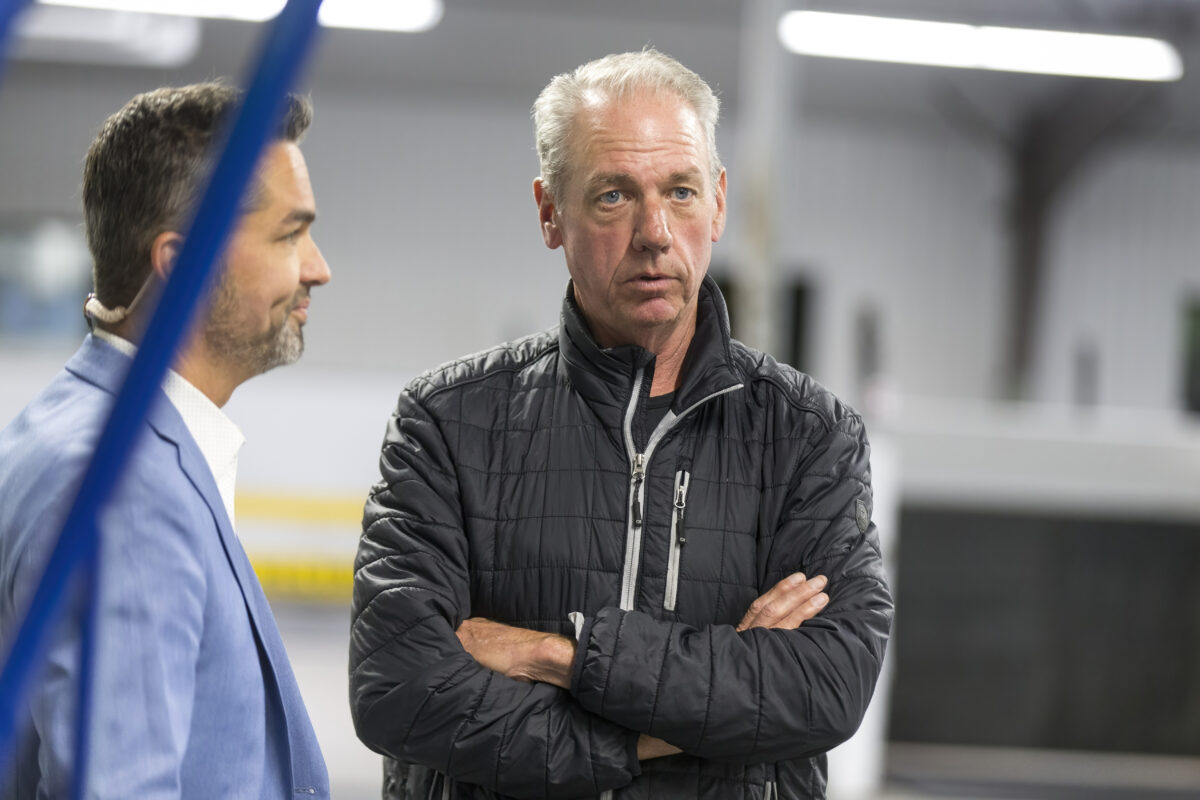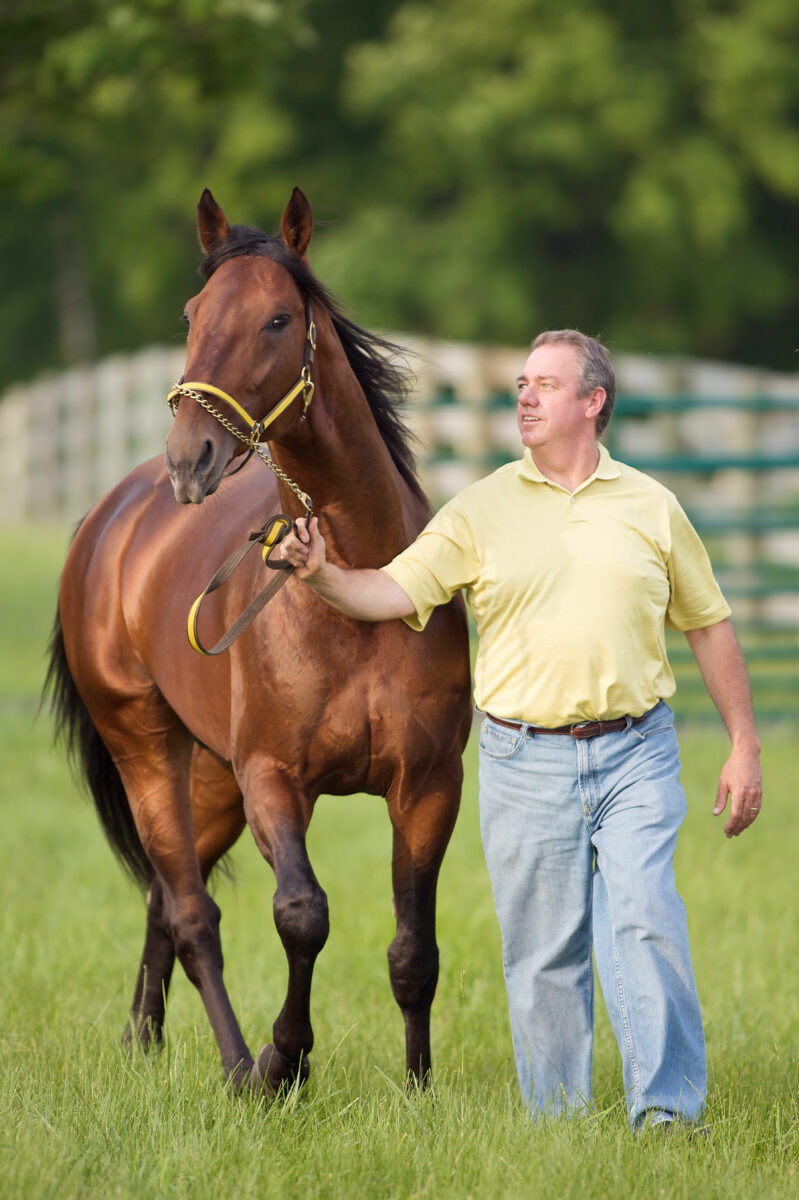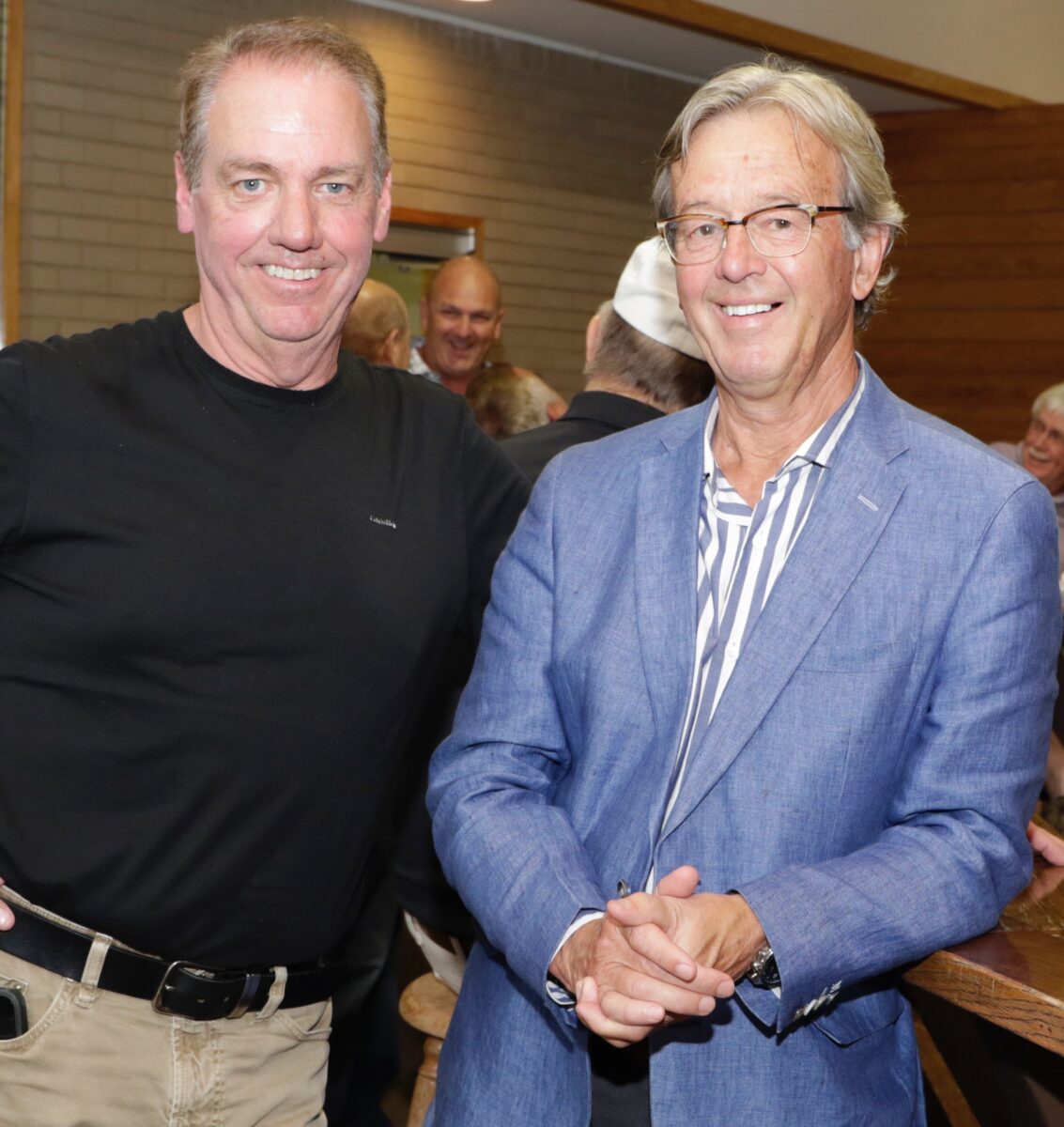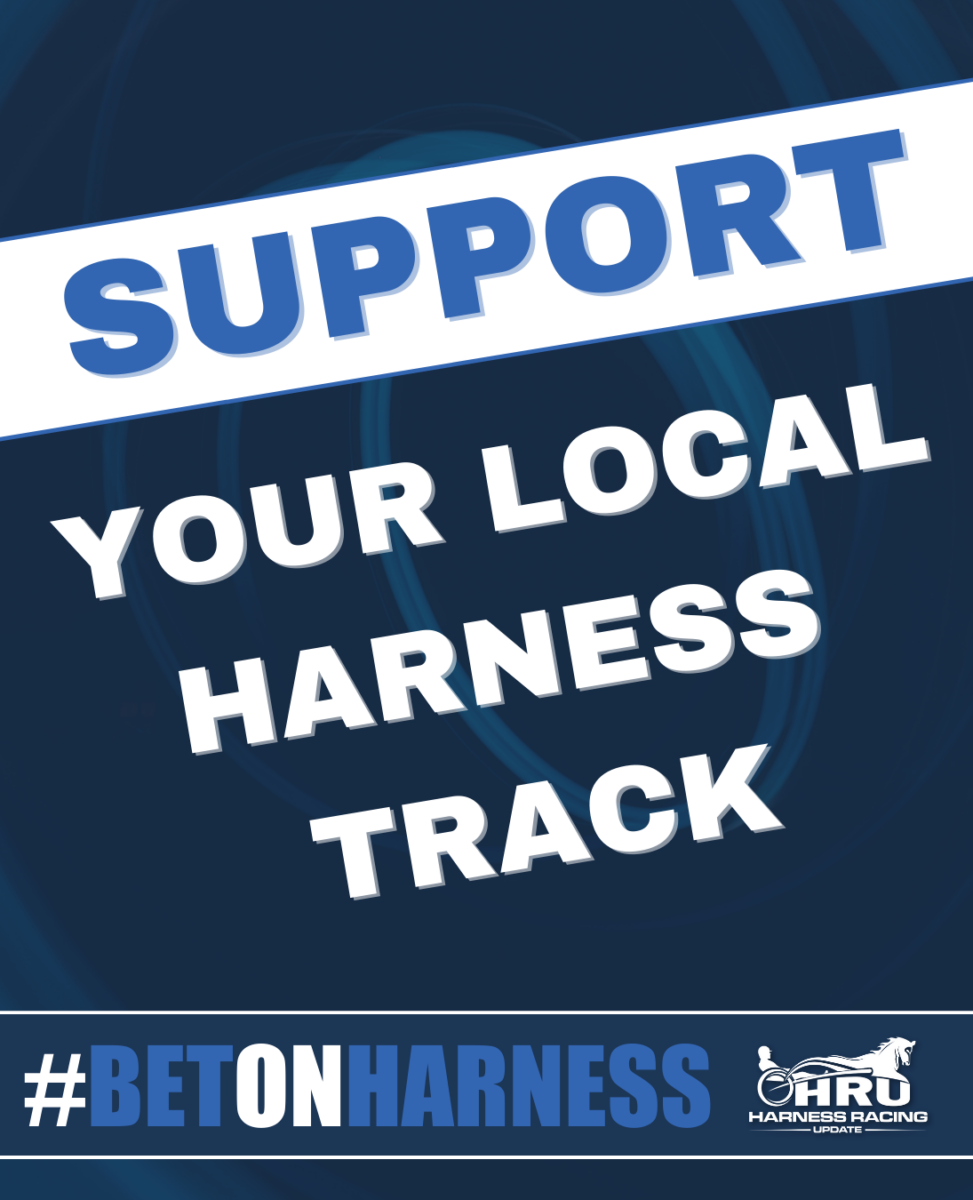Brent MacGrath’s life with and without ‘The Beach’
by Murray Brown
When I reached out to Brent MacGrath this past Wednesday he was at the gym. How appropriate, I thought to myself. Here is a man who has undergone two major life happenings in recent years, both of them evolving at about the same time. The biggest one being of course the loss of Somebeachsomewhere, the generational racehorse and stallion, who affected so many, but arguably none near as much as MacGrath. The second was Brent’s focus on health. At the time of the loss of ‘The Beach,’ Brent was at a staggering 265 pounds, the highest in his lifetime. Today he tips the scales at 172 and may even appear gaunt to those who knew him when he was so much heavier. Was there a connection in these two life-altering events? Maybe.
“The loss of Beach affected me in so many ways,” MacGrath said. “Perhaps not near as much in his stud career as that of the racetrack. But I, my partners in the Schooner Stable, the folks at Hanover Shoe Farms, and most Maritimers, were basking in his success in the stud. As great a racehorse as he was, he might very well have been becoming every bit as great, dare I say, even greater in the stud. Then it stopped. Not suddenly, but over a relatively short period of time, he was gone. His loss and that of my partner in both the horse and the car business, Garry Pye, brought to the forefront the fragility of life. I needed to start taking better care of myself. I started eating better, a whole lot better. I began exercising regularly. I lost a whole lot of weight. I’m healthier and I feel a whole lot better.”
Let’s begin with the story of your career in harness racing.
“I was about 12 years old. Kids weren’t allowed to work without their social security papers which they couldn’t get then until they were 16. My dad was a big harness fan. He’d take me to Truro Raceway which was less than a mile from where we lived. I began wandering down to the track where I would earn a few dollars cleaning stalls and washing harness, buckets and doing various other chores. I met Phil Pinkney and I began working part time for him. I began training with Phil. You couldn’t have a better teacher. My early years in the industry included work on both sides of the racetrack, from groom to training and driving to announcing, race secretary and track management. My brother was working with the Calgary Stampede when he heard a position had opened for an announcer at the newly reopened Marquis Downs in Saskatoon. So, at 19 years of age, I moved to Saskatoon to take on announcing duties and later returned to Nova Scotia as general manager of Truro Raceway.”
Allow me to interject. Many Maritimers, when they speak of Phil Pinkney, they speak of the man with reverence.
“He was a great horseman. If you were working with Phil and were not learning, then you just weren’t paying attention. There were many things I learned from Phil. If it were only one that has stuck with me through the years, it was his sense of, for lack of a better word, teamwork. The tendency with lots of people is when things are going well, they take the credit. When they aren’t, the fault lies elsewhere. It was never that way with Phil. When things were going well, it was because of the team. If it wasn’t, then that same team took the blame. Phil isn’t that well known in the States. I guess that it was mostly because his preference was to race fairly close to home. He did race at Foxboro and Rockingham and made several contacts with folks who would send him young horses to train and develop. He was exceptional at that.
“Another thing about Phil that remains with me was his attention to detail. His stable was always in tip-top shape. There was never, and I mean never, a time, regardless of how late it was, or how tired we might have been, when we left the barn without the floor being swept and without the horses having clean water buckets filled with fresh water. I like to think I’ve carried that practice forward all of my career.”
You came back to the Maritimes and then?
“Phil loved developing young horses and I decided I would do likewise. I bought a yearling from the first Maritime crop by Horton Hanover from Dr. Bob Webster for $5,000. Phil drove him to a win in his first start. Following the race, I was asked if I was interested in selling. With Adrenalin pumping, my first response was no. The man offered $30,000 which got my attention. I countered, and we settled for $35,000. I thought, ‘This horse business was pretty easy.’ I was to learn otherwise. By that time, newly married to my wife, Rhonda, I was eager to start a stable of my own. We decided to head for the big time — Toronto.
“We loaded our car and headed west. But, with a combination of some bad luck and plenty of inexperience, I quickly found myself out of the horse training business and in much need of an income. An ad for a sales job promising bonuses up to $50,000 a year caught my eye. After a preliminary screening with about 60 applicants, I was successful in making the cut with 11 others for a two-week training in car sales. We were fortunate to have had a trainer who had a great deal of success in the car industry and a ‘straight shooting’ style that I related to. This introduction to the car industry was a career move that I am extremely grateful for. I enjoyed a quite successful run in the Ontario car market. But both Rhonda and I missed our large families and the Maritimes. We decided to move home.”
You needed a job?
“It was at this time that I met Garry Pye, who was to become one of the six owners of Somebeachsomewhere. He was a successful businessman and owner of the GM dealership. Although his initial response to my applying for sales work was, ‘I’m not in need of sales help at this time,’ I was determined. I told him that he could either hire me and have me working for him, helping to build his business, or that I’d go to work for someone else and compete against him. I was hired. From that day we became the best of friends and business associates in the car trade and later with horses. Sadly, Garry passed away in 2020. We were both fortunate to have sons that had started careers in the industry and have now taken on leadership roles. Garry would be proud.”
Let’s talk about The Beach. How did that come about?
“It was in 2006. I was in the midst of establishing my own dealership. There was this banker friend, Stephen Tufts, who was of great help to me professionally. He also had a keen interest in racing. With his suggestion we made plans to attend the Lexington sale and race week. This was to be a first for both of us.
“It was at this time that I decided to get a few friends together to pool our resources and buy a yearling. Schooner Stable was born. We raised about $50,000. I was to pick the yearling, train it and manage its racing career.
“Then luck, of the good variety, stepped in more than once. I looked at many yearlings. I realized that with our limited budget that we couldn’t come close to affording the ‘blue bloods.’ If there were some of those that we might have been able to afford, they almost certainly had severe conformation faults. We didn’t want those anyway. Besides which, we were looking mostly for Ontario breds to race in the Ontario Sires Stakes.
“We looked at Somebeachsomewhere more than once. We loved him. I thought that he was as perfect as a horse could be. We determined that we were going to try to buy him. He was selling as the first horse in the Friday night session which was one of the lesser ones in the sale. That was the day of the infamous Ronnie Pierce ‘wave’ to Trond Smedshammer.
“The races finished later than normal that day. The traffic in Lexington was also pretty bad, thus delaying people’s access to the sale. This was to our benefit. There weren’t that many people there when Beach sold. I know that Casie Coleman had planned on buying him. She got stalled down in traffic and got there late. There were some who felt that because of his perceived lack of a great commercial pedigree that he brought more than his ‘paper’ said he should. I didn’t. He was the one we wanted and we got him. I’m not saying that was our absolute last bid, but it certainly was close to it. I was beyond pleased.
“We took him home. He was good from the beginning. But so are many who don’t turn out to become near as good as he became.
“The first time I put a watch to him was in May. We went a mile in 2:35. We then dropped him five seconds every week. He was always well within himself.
“We shipped to Mohawk. I asked Paul MacDonell to go a mile in 1:58. He went to the half in 1:03. I was not pleased. How was he going to go a mile in 1:58 off a half in 1:03? He didn’t. He went the mile in 1:53. I was in shock. The first question Paul asked me was if he was eligible to The Metro. I knew then that Paul believed that he might be special. As low key as Paul is, he wouldn’t have asked me that if he didn’t know that this could be a special horse.”
Most of us are pretty well acquainted with Somebeachsomewhere’s stellar racing career. Now you had to find a new home for him. How did he land at Hanover?
“You are right, there were many breeders who wanted him. In the end it came down to Hanover and Southwind. My preference was always Hanover. It was there that I thought he would get his best opportunity. Not only because I felt that we would get the best mares that Hanover had in their stellar broodmare band, but that the prestige associated with having the horse at harness racing’s greatest farm would also help in getting other good mares to his book.
“Of course, the money was a factor. But we went with a slightly lower offer. Jim Simpson, to whom I believe I owe a great deal of credit, really wanted the horse. I’ve been told that he faced some opposition from one of the owners of the farm, but was eventually able to persuade his partner to join him.
“We chose to not have a large syndicate involved with him. This may or may not have been the best move in the long run, but it is one to which I hold no regrets.
“My friend Myron Bell has often told me it was a big mistake. It may have been, but I do not believe so. From a financial standpoint it worked out very well. I think that the horse did very well, I would say exceptionally well despite not having a large syndicate, certainly better than any horse of his, or perhaps any other generation of any pacing stallion in history.”
Then he contracted cancer and eventually succumbed to it at a relatively young age.
“That was terrible. The irony, from my perspective, is that in the entire history of the sport, there have been very few, if any, top horses who have been treated with fewer injectables than this horse was. The totality of that number was zero, as in none! But he was the one that fate cast its fickle finger on. Such are the vagaries of life. As they say, stuff happens.”
You have another Beach, Beach Glass, from the small number of foals conceived through frozen semen from SBSW’s last small crop.
“We have been twice blessed. Beach Glass was a wonderful racehorse — not SBSW, but no other horse was. Unfortunately, we weren’t able to see how great Beach Glass actually was or was meant to be, because his epiglottis became repeatedly entrapped preventing him from properly getting his air properly. Despite the problem, he still was a top Grand Circuit performer. He is standing in Ontario at Winbak Farms where he began stallion duties last year. He served a good-sized book of 104 mares in a highly competitive environment in his first season at stud. His first foals are now beginning to arrive. I am looking forward to training some of his babies when they become yearlings.”
